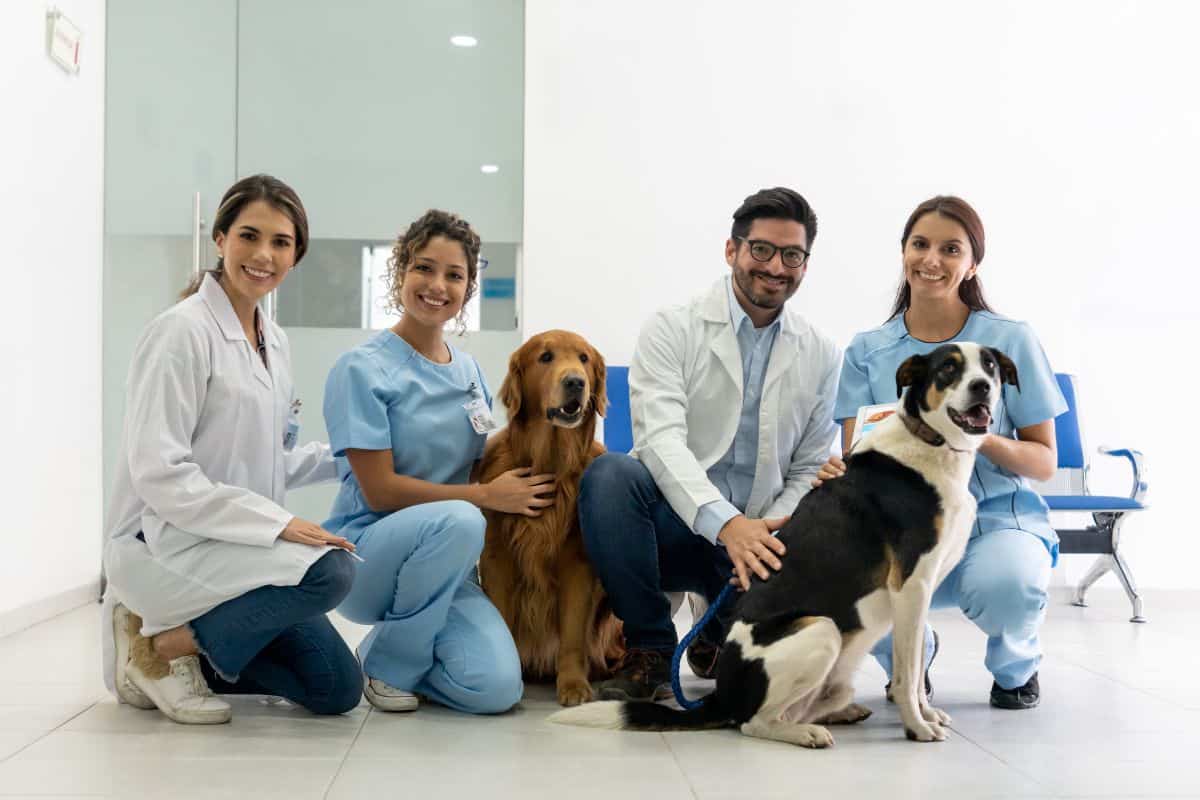Why an Animal Hospital Supplies the Most Comprehensive Take Care Of Your Pet dog
Why an Animal Hospital Supplies the Most Comprehensive Take Care Of Your Pet dog
Blog Article
Signs It's Time to Go To Your Local Veterinarian
Comprehending when to look for vet care for your pet dog is vital for keeping their general health and well-being. Subtle changes, such as changes in eating routines or unusual behavior, frequently work as crucial signs of underlying health and wellness problems. Signs of pain or persistent signs and symptoms can signify the need for immediate clinical attention. Being in harmony with these nuances can make a considerable difference in your family pet's high quality of life. As we explore these indicators better, it comes to be clear that timely intervention can bring about much better outcomes for your beloved friend.
Adjustments in Consuming Practices
Changes in eating habits can be a critical sign of a family pet's total wellness. Veterinarian Ames. Conversely, an unforeseen rise in food consumption might suggest metabolic disorders, diabetic issues, or also behavioral changes.
It is necessary for pet dog owners to check their pets closely and note any kind of variances from their normal consuming patterns. This includes not only the quantity of food consumed yet likewise changes in the sort of food favored or hesitation to consume certain products. Additionally, animals might display changes in consuming habits along with other signs, such as sleepiness, vomiting, or modifications in habits, which can further aid in recognizing potential health worries.

Unusual Weight Reduction or Gain
Keeping an eye on a pet dog's weight is as important as observing their eating routines, as unexplained fat burning or gain can suggest major illness. An obvious adjustment in weight, whether it be a considerable decrease or a boost, ought to not be ignored. Such changes can indicate hidden clinical conditions such as diabetes mellitus, hyperthyroidism, kidney condition, or specific sorts of cancer.
In pets, unexpected weight management can result from intestinal issues, bloodsuckers, or oral problems that impact their capacity to consume. For felines, weight management can be particularly worrying, as it may suggest a major wellness issue that requires timely attention. Alternatively, unexplained weight gain can be connected to metabolic problems, over-eating, or even certain drugs that might change hunger.
It is important for pet dog owners to check their pets' weight consistently and to note any adjustments in their body problem. It is advisable to consult your veterinarian if you observe a constant trend of weight loss or gain over a short period. Early discovery and treatment can result in extra efficient therapy options and better health end results for your beloved family pet.

Modified Behavior or Power Levels
Regularly, animal proprietors may notice modified behavior or power degrees in their pets, which can be an important sign of underlying health and wellness concerns. Adjustments such as increased sleepiness, reduced passion in play, or uncommon hostility can indicate that something is wrong. Pet dogs that usually display high power levels may unexpectedly become listless, while those that are usually calm might come to be agitated or hyper.
Additionally, changes in daily regimens, such as adjustments in resting patterns, cravings, or social communications, warrant interest. For circumstances, a canine that no more greets its owner at the door or a cat that conceals more information much more regularly could be experiencing distress. These behavioral changes can stem from numerous factors, consisting of disease, pain, or emotional distress.

Signs of Discomfort or Discomfort
Acknowledging indicators of discomfort or discomfort in animals is critical for ensuring their wellness. Pets typically exhibit refined changes in habits that might suggest they are experiencing discomfort. Common indicators consist of articulations such as whining, grumbling, or yelping, which can signify distress. Furthermore, an animal may become much more withdrawn or display modifications in their typical sociability, liking to separate themselves.
Physical indicators are additionally important to observe. Pets might display transformed grooming habits, such as extreme licking of a specific area or ignoring their self-care altogether. Hopping, hesitation to move, or trouble in standing or relaxing are clear signs of discomfort. Changes in appetite or alcohol consumption routines might also recommend underlying pain, as animals typically shed passion in food when they are unwell.
Furthermore, watch for unusual poses; for example, a family pet may adopt a stooped placement or appear to secure a certain area of their body. If you discover any of these indications, it is important to consult your veterinarian quickly. Early intervention can lead to better management of pain and improve your animal's high quality of life.
Consistent Symptoms or Health Problem
Consistent symptoms or ailment in pet dogs necessitate immediate attention and must not be neglected. If your pet shows recurring indications such as vomiting, looseness of the bowels, coughing, or sleepiness for even more than 1 day, it is critical to get in touch with a read this article veterinarian. These signs can show underlying health and wellness problems that might aggravate without timely intervention.
Chronic conditions, such as allergic reactions, diabetic issues, or kidney condition, commonly present with reoccuring symptoms that can considerably impact your pet dog's lifestyle. In useful site addition, modifications in appetite, weight reduction, or difficulty in activity are red flags that warrant more examination. Disregarding these signs can bring about difficulties that are more pricey and challenging to treat.
It is also vital to monitor behavior changes, as pet dogs might not constantly exhibit evident physical signs and symptoms. If your family pet is unusually withdrawn, nervous, or hostile, this can indicate pain or discomfort that calls for veterinary analysis.
Verdict
In final thought, understanding of the indicators suggesting a requirement for vet care is crucial for keeping pet health. Regular surveillance of a pet's problem and prompt activity in reaction to concerning indicators are crucial components of accountable pet dog possession.
Adjustments in eating routines can be an important sign of an animal's total health and wellness.It is necessary for pet dog owners to monitor their animals carefully and keep in mind any kind of discrepancies from their normal consuming patterns. Furthermore, animals may exhibit adjustments in eating behaviors along with other indicators, such as sleepiness, vomiting, or adjustments in habits, which can better aid in determining prospective health concerns.
It is essential for animal proprietors to monitor their family pets' weight regularly and to note any type of adjustments in their body problem. Routine tracking of a pet dog's problem and timely activity in reaction to worrying signs are important elements of responsible family pet ownership.
Report this page